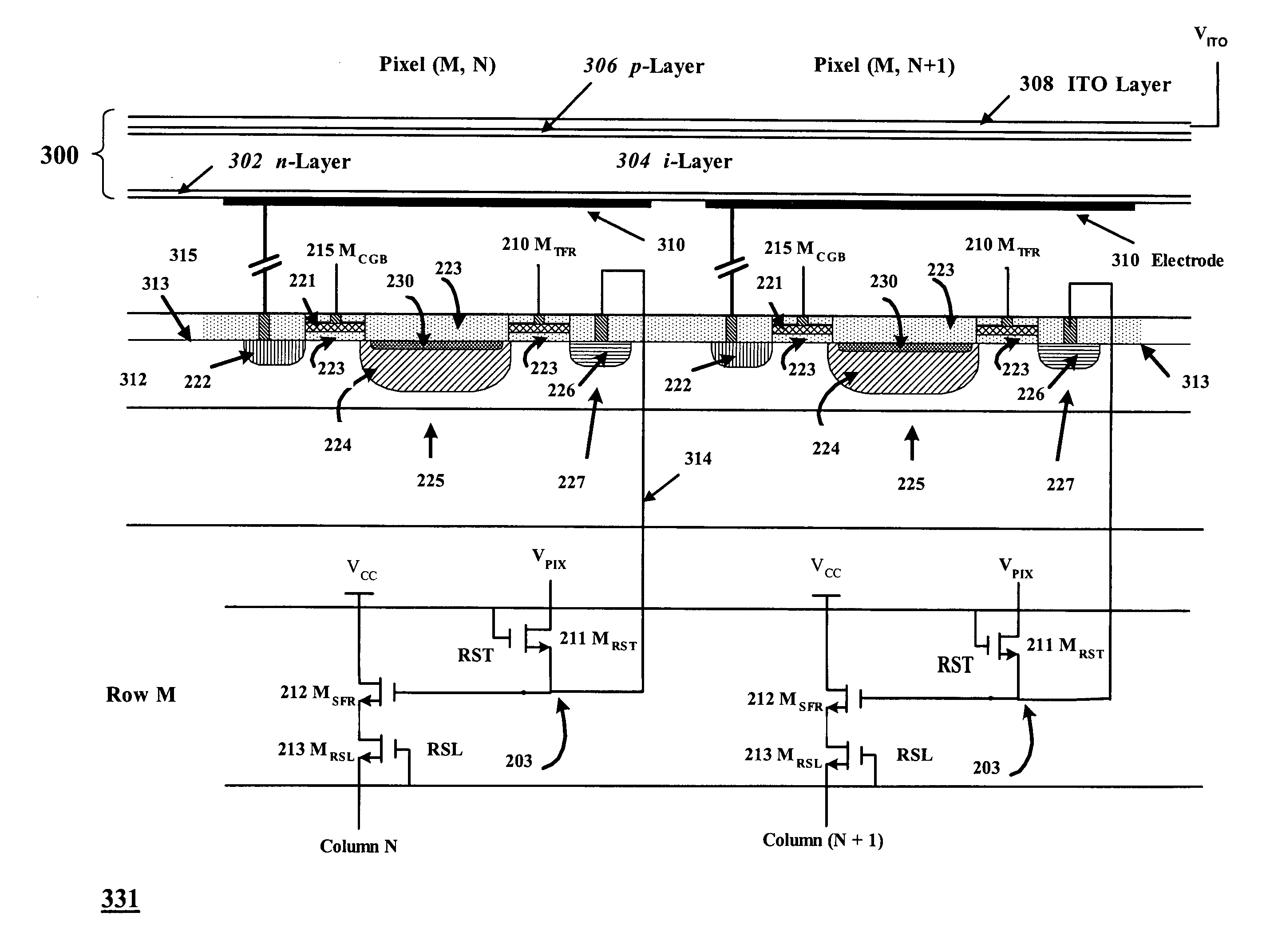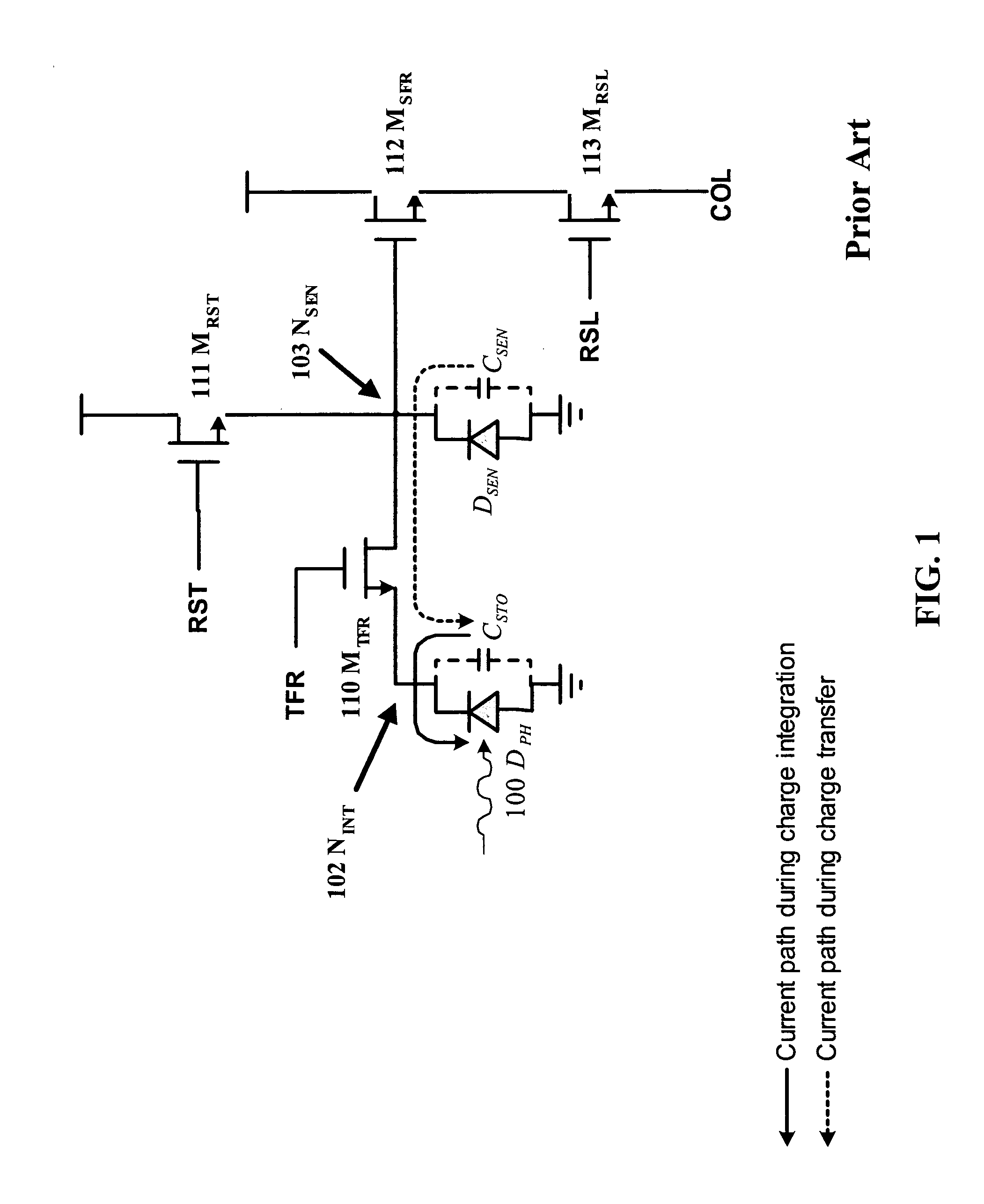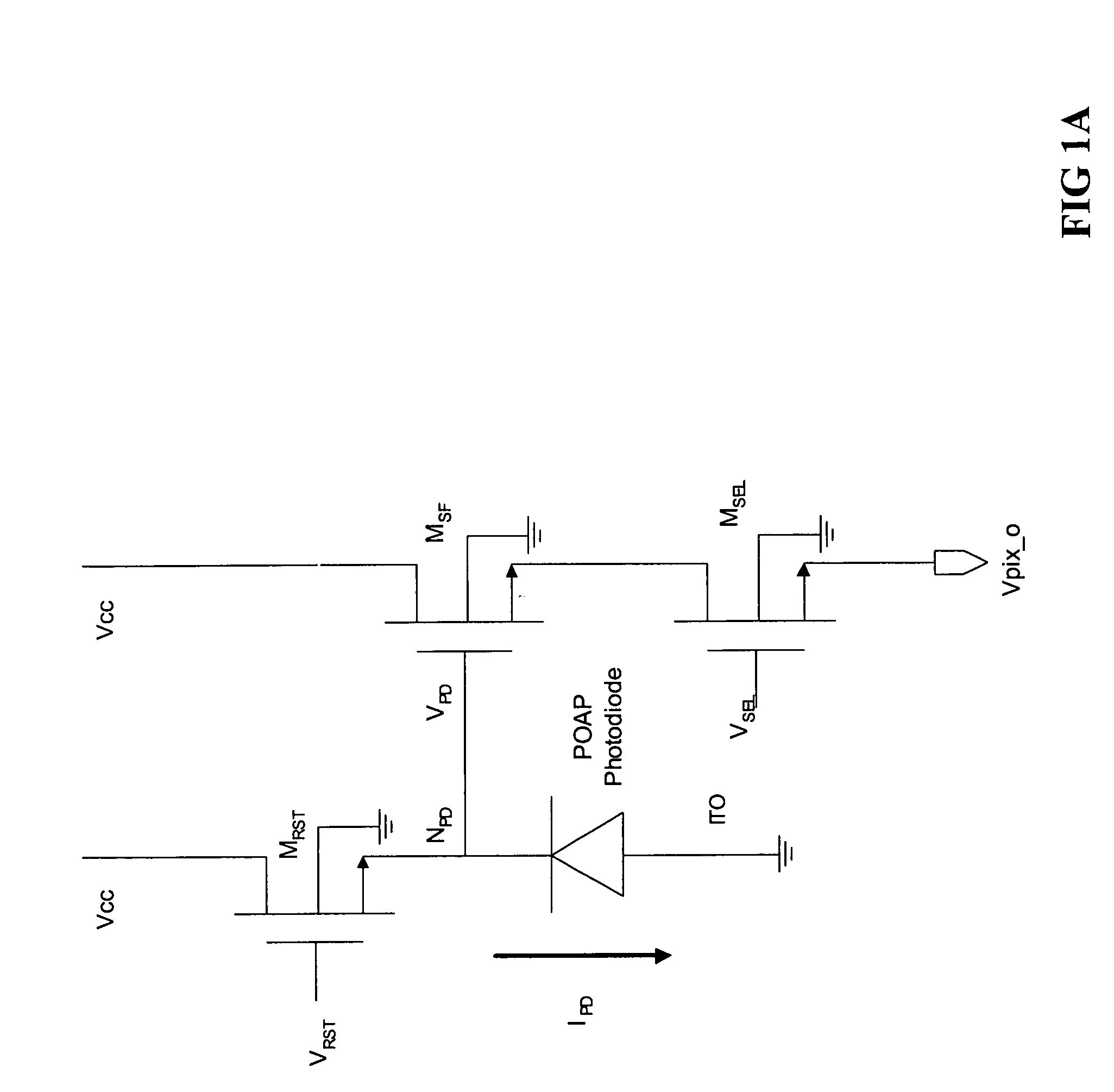CMOS sensor with approximately equal potential photodiodes
a photodiode and sensor technology, applied in the field of cmos sensor with approximately equal potential photodiodes, can solve the problems of incomplete charge transfer, inability to fabricate the travel path with perfection in real practice, etc., and achieve the effect of reducing or eliminating clock noise, reducing or eliminating dark curren
- Summary
- Abstract
- Description
- Claims
- Application Information
AI Technical Summary
Benefits of technology
Problems solved by technology
Method used
Image
Examples
Embodiment Construction
First and Second Preferred Embodiments
[0045]First and second preferred embodiments of the present invention are shown in FIGS. 9 and 10. These are four transistor CMOS pixel circuits similar to pixel circuits described in the parent applications referred to in the second paragraph of this application. These pixel circuits may be many pixel circuits in an array of pixel circuits. The number could range from just a few pixels to several million pixels. For example Applicant and his fellow workers have designed and had fabricated sensors with 300 thousands, 2 millions, 36 million pixels and have even designed sensors with more than 150 million pixels.
[0046]This four transistor design includes a row select transistor 813 MRSL, a source follower transistor 812 MSFR, a reset transistor 811 MRST and a constant gate bias transistor 815 MCGB. The constant gate bias transistor assures that the pixel electrode at node 801 remains at a constant potential throughout the charge integration proces...
PUM
 Login to View More
Login to View More Abstract
Description
Claims
Application Information
 Login to View More
Login to View More - R&D
- Intellectual Property
- Life Sciences
- Materials
- Tech Scout
- Unparalleled Data Quality
- Higher Quality Content
- 60% Fewer Hallucinations
Browse by: Latest US Patents, China's latest patents, Technical Efficacy Thesaurus, Application Domain, Technology Topic, Popular Technical Reports.
© 2025 PatSnap. All rights reserved.Legal|Privacy policy|Modern Slavery Act Transparency Statement|Sitemap|About US| Contact US: help@patsnap.com



